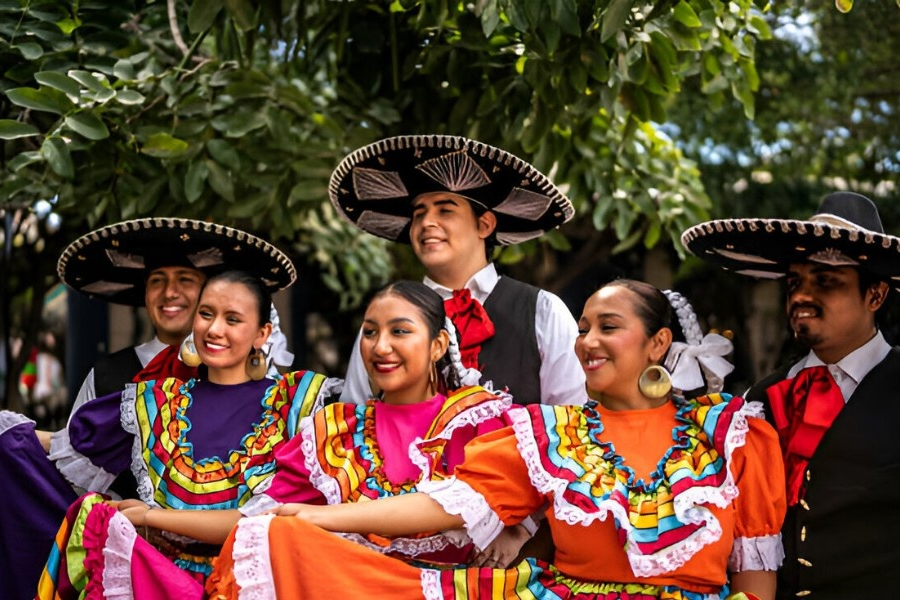Understanding Amazigh Influence: Contributions to Regional and Global Culture
Discovering the Amaziɣ Culture: A Journey Through North Africa’s Indigenous Heritage
North Africa, with its rich historical tapestry and diverse cultural landscape, often highlights a less-recognized yet deeply influential group: the Amaziɣ people. Known to many as the Berbers, these indigenous communities have left an indelible mark on the region with their vibrant traditions, rich storytelling, and profound cultural beliefs. This exploration into the Amaziɣ culture offers an engaging look into their history, customs, and contemporary challenges, revealing a heritage that continues to inspire and endure.
The Origins and Historical Journey of the Amaziɣ
The Amaziɣ people have been a cornerstone of North Africa’s history, with roots extending back thousands of years. Their presence in the region predates many well-known civilizations, establishing them as one of the area’s earliest inhabitants. Linguistic studies trace their languages—part of the Afro-Asiatic family—back to ancient times, underscoring their deep connection to the land and its history.
Throughout the centuries, the Amaziɣ have encountered various empires and cultures, from the Romans to the Arabs, each leaving its mark. Despite these external influences, the Amaziɣ have preserved their distinct identity, flourishing in the harsh landscapes of deserts and mountains. Their continued celebration of traditional arts, music, and oral histories stands as a testament to their enduring cultural legacy.
Rich Traditions and Beliefs of the Amaziɣ
Central to the Amaziɣ culture are their vibrant traditions and spiritual practices. Music, with its rhythmic beats and melodies, is a vital part of their celebrations and rituals. Instruments such as the guembri and bendir are integral to their musical heritage, bringing life to their community events.
Amaziɣ art is equally significant, featuring intricate woodwork, pottery, and textiles adorned with symbolic patterns. These artworks often carry meanings related to protection and fertility, reflecting their deep-rooted beliefs.
Spirituality in Amaziɣ culture is deeply intertwined with nature. Many Amaziɣ practice animism, believing in the presence of spirits within natural elements like rivers and mountains. This belief system fosters a lifestyle of environmental respect and sustainability.
Family and community hold crucial importance in Amaziɣ society. Elders are revered for their wisdom, guiding the younger generations and reinforcing values of respect and unity. These traditions play a key role in maintaining the Amaziɣ identity and fostering a sense of belonging.
The Amaziɣ Influence on North Africa
The impact of Amaziɣ culture on North Africa is profound and widespread. Their languages, such as Tamazight and Tarifit, enrich the linguistic diversity of countries like Morocco and Algeria, preserving ancient stories and traditions.
Culinary practices are another aspect of their influence. Traditional dishes like tagines and couscous, along with herbal teas, reflect a rich gastronomic heritage passed down through generations.
Amaziɣ artistry also contributes to the region’s cultural richness. Their colorful textiles and detailed pottery are celebrated for their craftsmanship and continue to attract admiration from both locals and visitors.
Festivals and communal celebrations, such as those marking harvests or historical events, bring communities together, strengthening social bonds. Traditional music and rhythms remain integral to these celebrations, linking contemporary life with ancestral practices.
Contemporary Challenges and Cultural Preservation
The Amaziɣ people face significant challenges in the modern era. Urbanization and globalization pose threats to their traditional ways of life, with many young Amaziɣ migrating to cities for work, leaving rural areas vulnerable.
Cultural preservation is a critical concern. Efforts to revitalize Amaziɣ traditions are gaining momentum, driven by grassroots organizations that promote language education, cultural workshops, and festivals. These initiatives aim to keep the Amaziɣ heritage alive amidst modern pressures.
Collaborations with governments and international partners are essential for sustainable development that respects indigenous rights. Ecotourism also offers potential for economic growth while protecting natural landscapes vital to Amaziɣ culture.
Exploring Amaziɣ Culture: Must-Visit Destinations
To fully appreciate the Amaziɣ culture, certain destinations are worth exploring. The village of Imlil in Morocco’s High Atlas Mountains offers an authentic glimpse into traditional Amaziɣ life amidst stunning natural beauty.
The bustling city of Marrakech provides a rich experience of Amaziɣ artistry and craftsmanship. The local markets are perfect for discovering handmade rugs and pottery created by skilled artisans.
Essaouira, with its coastal charm and UNESCO World Heritage status, showcases architectural influences from Amaziɣ design.
In Tunisia’s Matmata region, the troglodyte communities offer a unique window into ancient traditions still practiced today. Each location tells a story about the resilience and richness of the Amaziɣ culture.
Summary:
The Amaziɣ, also known as Berbers, are an indigenous people of North Africa with a rich and enduring cultural heritage. Their history spans thousands of years, with their presence predating many well-known civilizations. The Amaziɣ languages are part of the Afro-Asiatic family, reflecting their deep connection to the region’s history.
Their culture is characterized by vibrant traditions and spiritual beliefs. Music plays a vital role in their celebrations, and their art, including woodwork, pottery, and textiles, is adorned with symbolic patterns. Spirituality in Amaziɣ culture is closely linked to nature, with many practicing animism and showing reverence for natural elements. Family and community are central to their society, with elders guiding the younger generation and reinforcing values of unity.
The Amaziɣ have significantly influenced North Africa through their languages, culinary practices, and artistry. Traditional dishes like tagines and couscous, as well as colorful textiles and pottery, are integral to the region’s cultural richness. Festivals and communal celebrations strengthen social bonds and connect contemporary life with ancestral practices.
However, the Amaziɣ face challenges from urbanization and globalization, which threaten their traditional ways of life. Efforts to preserve their culture are ongoing, with grassroots organizations promoting language education and cultural events. Collaborations with governments and international partners, along with ecotourism, offer avenues for sustaining and protecting their heritage.
Destinations such as Imlil, Marrakech, Essaouira, and Tunisia’s Matmata region provide opportunities to explore and appreciate Amaziɣ culture, showcasing their traditional lifestyle and artistic achievements.
FAQs:
1. Who are the Amaziɣ people?
The Amaziɣ, also known as Berbers, are indigenous inhabitants of North Africa with a cultural heritage that dates back thousands of years. They are known for their vibrant traditions, rich storytelling, and deep spiritual beliefs.
2. What are some key aspects of Amaziɣ culture?
Amaziɣ culture is characterized by its vibrant music, intricate art, and spiritual beliefs closely tied to nature. Music, featuring instruments like the guembri and bendir, plays a central role in their celebrations. Their art includes detailed woodwork, pottery, and textiles with symbolic meanings. Many Amaziɣ practice animism, showing reverence for natural elements.
3. How has the Amaziɣ culture influenced North Africa?
The Amaziɣ have influenced North Africa through their languages, such as Tamazight and Tarifit, and their culinary practices, including dishes like tagines and couscous. Their artistry, including colorful textiles and detailed pottery, adds to the region’s cultural richness. Festivals and communal celebrations reflect their traditional practices and foster social bonds.
4. What challenges do the Amaziɣ people face today?
The Amaziɣ face challenges from urbanization and globalization, which threaten their traditional ways of life. Many young Amaziɣ migrate to cities for work, leaving rural areas vulnerable. Cultural preservation is a critical concern, with efforts needed to revitalize traditions and protect their heritage.
5. How are efforts being made to preserve Amaziɣ culture?
Efforts to preserve Amaziɣ culture include language education, cultural workshops, and festivals organized by grassroots organizations. Collaborations with governments and international partners are essential for sustainable development that respects indigenous rights. Ecotourism also offers opportunities for economic growth while protecting natural landscapes important to the Amaziɣ.
6. What are some must-visit destinations to experience Amaziɣ culture?
To experience Amaziɣ culture, consider visiting the village of Imlil in Morocco’s High Atlas Mountains, the city of Marrakech for its artistry, Essaouira for its architectural influences, and Tunisia’s Matmata region to explore troglodyte communities that reflect ancient traditions. Each destination provides a unique perspective on the Amaziɣ heritage.
Stay ahead in the world of health and wellness with the latest updates from Sweatlar.com.






